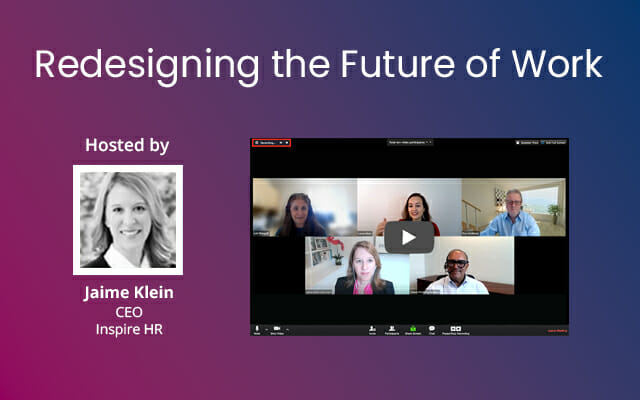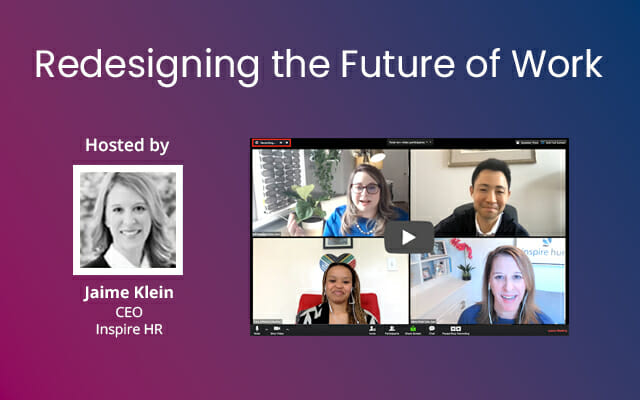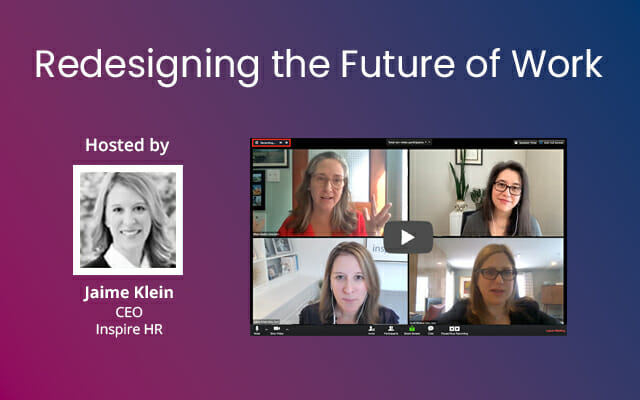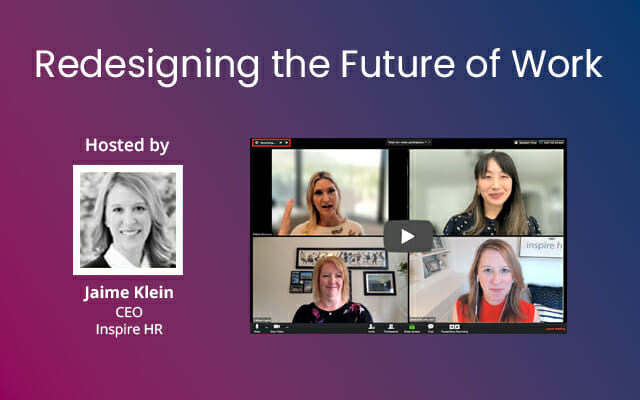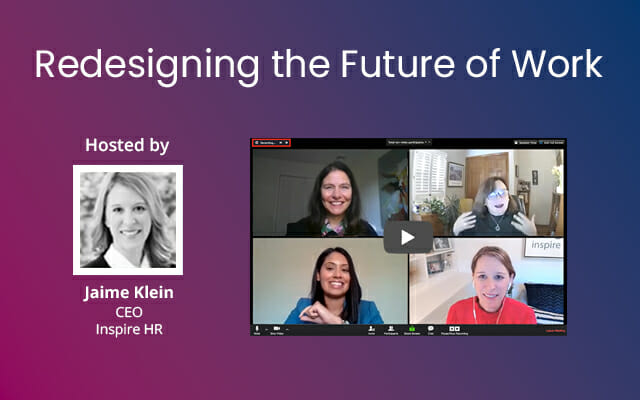
Planning for Hybrid Work With So Much in Flux
SEP 28, 2021
More companies are extending their return to office (RTO) and hybrid work target dates. The list keeps growing, now including: Apple, Shutterstock, Google, Lyft, Indeed…maybe your company, too? As of late August, 66% of companies surveyed by Gartner have delayed their RTO date.
We are more than 18 months in and we are all feeling Covid fatigue. It is affecting employers, employees, and our collective company cultures. And when President Biden announced that companies with 100+ employees have to require vaccines or weekly testing for their in-office employees, return to work and hybrid work planning became even more stressful (and expensive).
It keeps getting harder to plan for the return to office. The goal post keeps moving farther.
We have worked with hundreds of companies of all sizes, over the last 15 years at Inspire, and a dedication to developing an engaged, productive, and inclusive workforce is the common thread woven through them all.
Let’s get back to that as our goal post. The return date is important, of course, but it’s secondary. And we can’t afford to let shifting dates paralyze us.
Here are three things HR leaders should be doing to prepare for the future—whether you’re back in the office on January 2, February 1, or September 2022:
Create flexible RTO and hybrid work plans
Employees expect their leaders to keep them informed, but creating overly detailed plans, then having to revise them, can lead to a feeling of whiplash. Flexible RTO and hybrid work plans can provide a framework around how many days employees may be expected to work from the office, set clear employee expectations for how managers will measure employee performance, expected meeting protocols, predicted in-office days and hours, and how changes will be communicated.
The key is to understand the many variables that will affect the details. As of September 3, there had already been 1,400 school closures across 35 states. That means thousands of parents and caregivers were suddenly working with their kids at home again. As HR leaders, we have to realize caregiving and other competing responsibilities are not going anywhere. We have to be able to adjust as necessary.
Now is the time to reexamine the makeup of your task force or multidisciplinary team leading the planning for the return to office. Ask yourself: Are there any gaps in representation? What have we learned in the months since the team was formed? Are we still actively soliciting input from employees? Are we communicating frequently and diversely?
Each extension is another opportunity to promote more inclusive leadership through the process, to improve communications, and to refocus on your end “why.”
Train managers for remote work and hybrid work
In March of 2020, we were talking about two weeks of disruption. Then it was summer. Then holidays with extended family were canceled. Then Labor Day…
We can’t afford to wait it out, no matter how much we all crave the next normal. We have to accept that this is the most normal we can count on for today, and build employee engagement and management structures to fit.
In one of our most popular training courses, “Managing Hybrid Teams,” we suggest simple but effective tactics, including: calling on remote colleagues first during a meeting, promote group threads on emails to make up for lost opportunities for water cooler conversations, hold virtual office hours, and make phone calls instead of always relying on Zoom. These are simple shifts managers can make to be more effective in today’s workplace.
Reduce burnout and promote employee wellness
Look at some of these stats on employee burnout from an Indeed study published earlier this year:
- 67% of workers feel burnout has worsened during the pandemic.
- 27% of workers are unable to unplug from work.
- 57% of workers are working longer hours than they did pre-pandemic.
Burnout is a huge struggle for employees and leaders. According to a recent study from Leadership IQ, 71% of leaders expect some of their best people are going to quit because of employee burnout, yet just 24% of leaders say their company conducts training to reduce burnout. Preventing burnout and promoting employee wellness are essential elements of Inspire’s training on inclusive leadership, managing hybrid teams, and hybrid work for employees for this very reason.
As we work with colleagues in finance, legal, and compliance to manage the more tactical pieces in the shift to hybrid work, we also have to focus on promoting an inclusive culture that values our employees as people—not just as performers. And we have to be deliberate about it.
Are you still asking employees to share something positive from their week, or making it a point to ask how they’re doing? If these check-ins that were common at the beginning of the pandemic have lapsed, this is the time to bring them back.

Erica Keswin, workplace strategist and best-selling author joined us for a session of Redesigning the Future of Work recently and shared how rituals and routines can provide psychological safety, particularly as dates shift and we still lack certainty around next steps. She urged HR leaders to identify or introduce rituals at each phase of the employee experience and always connect them back to your organization’s values.
“Think about these rituals through the lens of being inclusive,” Erica says. “Rituals can bring us together and rituals can also celebrate us.”
Be deliberate in establishing new rituals. Check-in to see how your teams have accepted the new routines that emerged over the last 20 months and how the routines have contributed to your culture. Look at everything from opening meetings with good news, to new channels on Slack, monthly social hours, and 1:1 meeting structures.
We’re all craving stability. We all want to begin our next phase of work. We all want the pandemic behind us. But let’s not hold our collective breath. Let’s re-focus on our values and our goals and do everything we can today to reinforce them.
